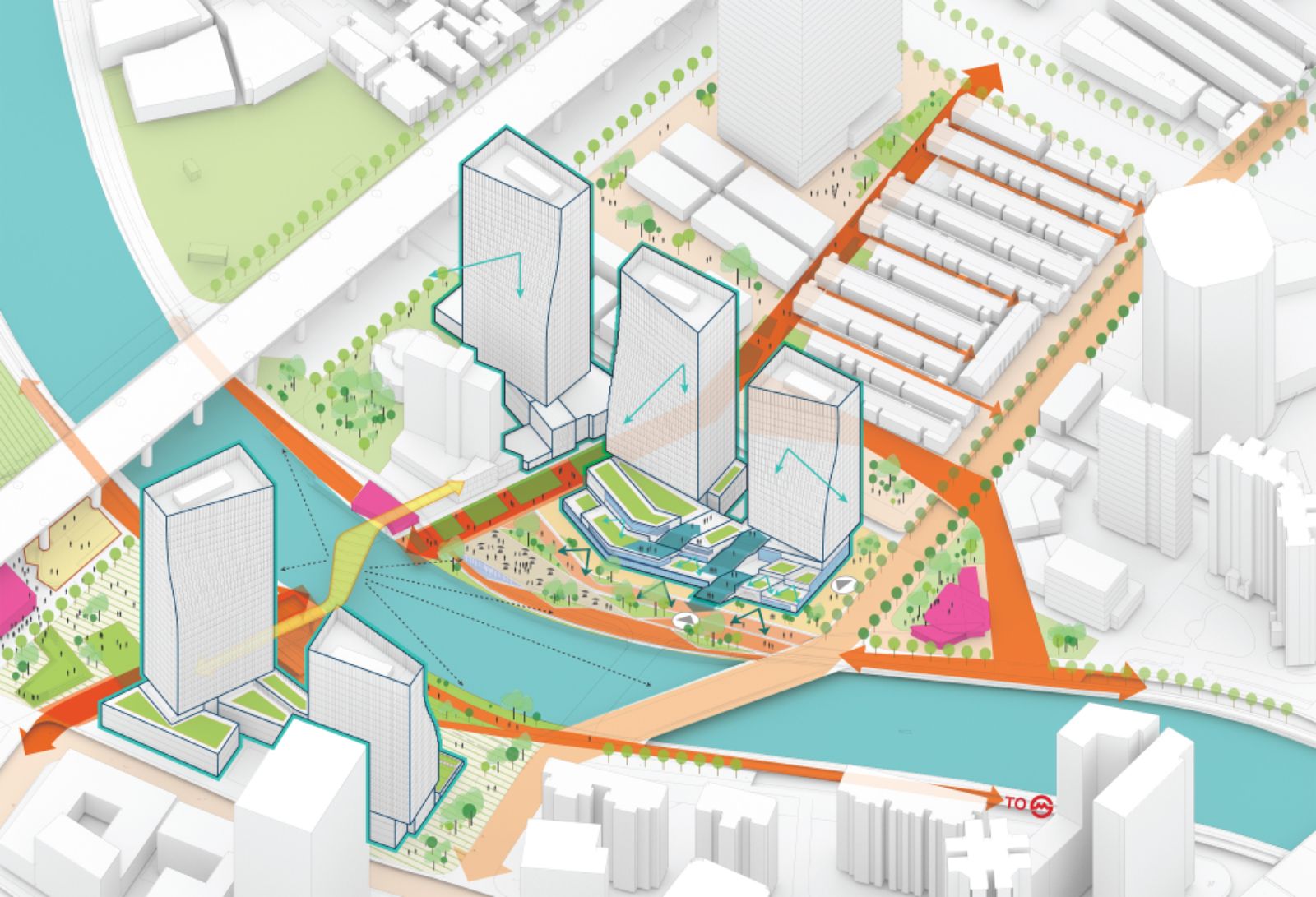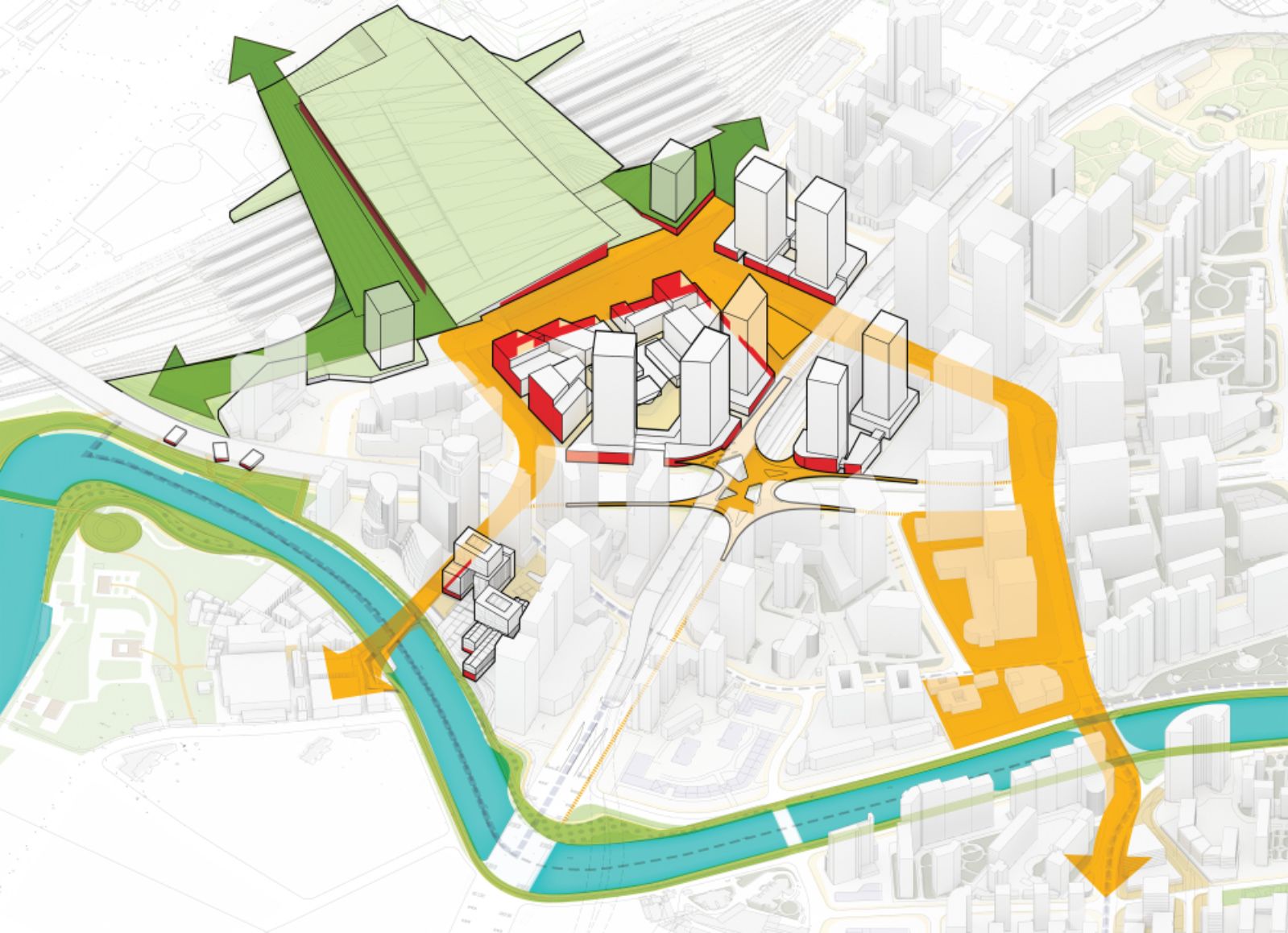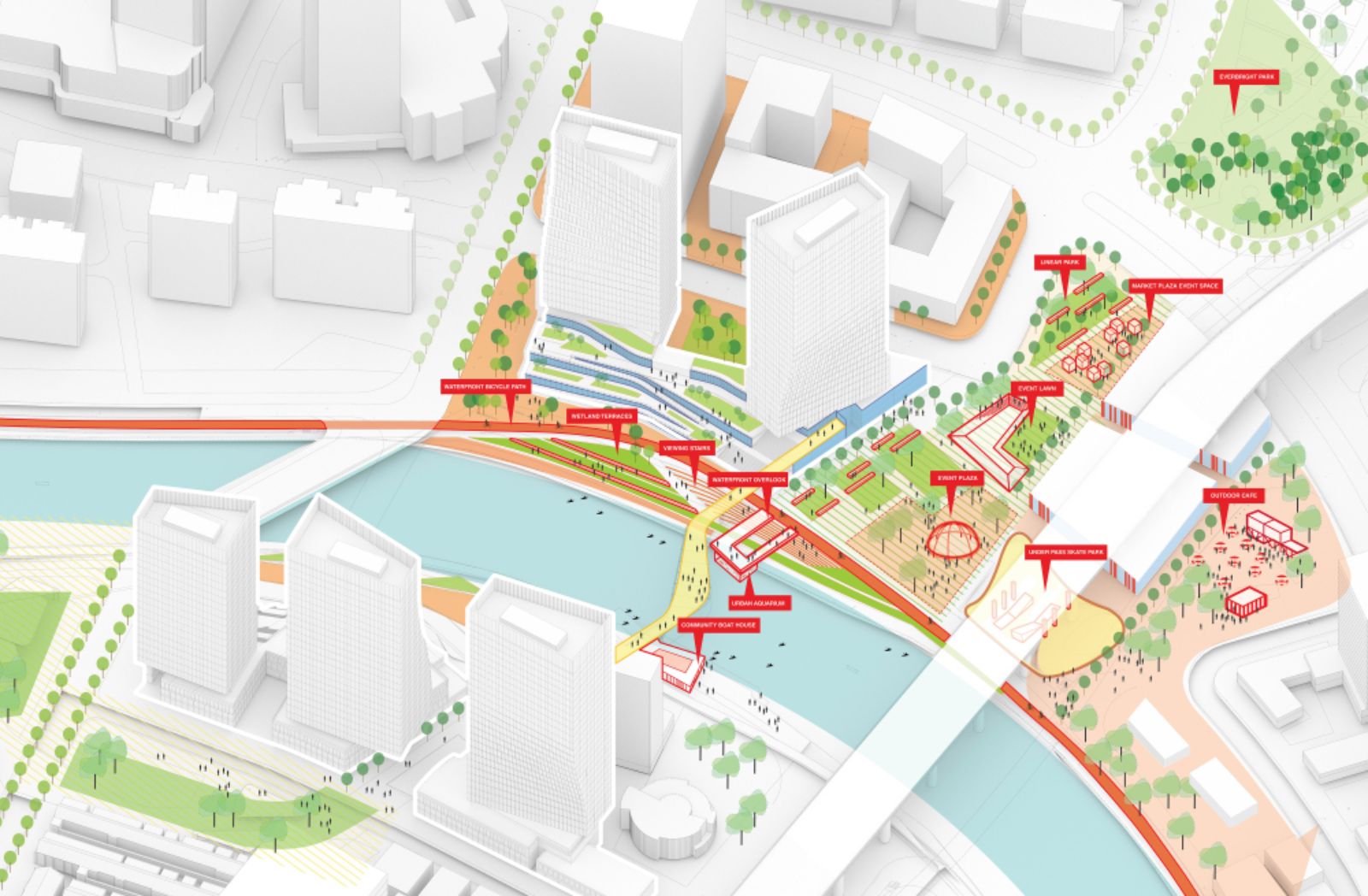
Sasaki was selected as the winning team for the international competition to redesign Suzhou Creek in Shanghai, China. Suzhou Creek (also known as the Wusong River) was historically one of Shanghai’s most vital water routes, but in recent decades suffered from unspeakable pollution and neglect. With a grant from the Asian Development Bank, the waterway is now clean and ready to reclaim its role as a centerpiece of the city.

For thousands of years, long before Shanghai evolved into a global metropolis, Suzhou Creek dominated the landscape. As the region was settled, centuries of human manipulation sought to contain Suzhou Creek, transforming it from a key feature of the watershed into a highly engineered canal used to transport goods and materials. Suzhou Creek is often credited as one of the primary drivers of Shanghai’s modern industrialization.
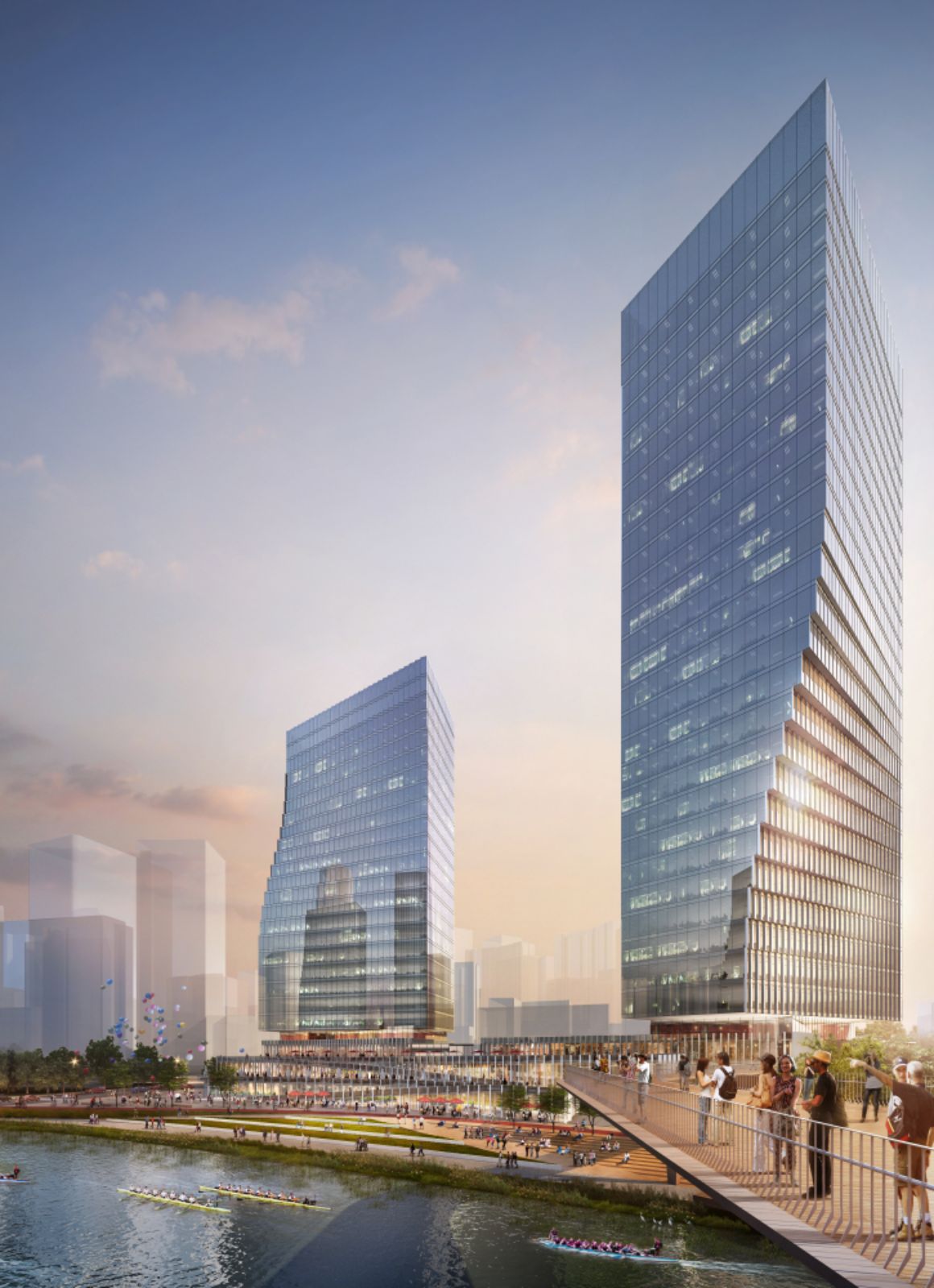
For recent generations of Shanghainese, however, Suzhou Creek is remembered as a wasteland, culminating in a public health hazard that disproportionately affected the city’s poor and most vulnerable. In 2015, two city districts abutting the creek combined. With the south bank in the wealthy and cosmopolitan Jing’an District, and the north bank in the socially underrepresented Zhabei District, Suzhou Creek was a physical and mental divide that underscored the dichotomy of contemporary Shanghai.

This artificial jurisdictional barrier also limited the city’s ability to think about the creek holistically. With this new administrative change, however, 12.5 linear kilometers of prime waterfront in the center of Shanghai were now unified. The Sasaki plan capitalizes on the merger of municipal districts as a catalyst not simply for development, but for the renewal of a once disenfranchised waterfront to address vast physical and social gaps in the city’s fabric.

Seeing the opportunity to unleash Suzhou Creek’s potential, Sasaki focused on expanding the perceived waterfront of Shanghai into the urban blocks adjacent to the creek. This reclamation of Suzhou Creek for public use creates an urban/cultural watershed that is delineated by recreational waterfront edges and a vibrant urban frontage.

Isolated neighborhoods are energized by adding new mixed-use development and strengthening connections to nearby destinations such as Shanghai’s central railway station and the M50 Arts District. By avoiding the preconceived idea of the creek as an exclusively linear experience, the Sasaki plan reorganizes the singularity of the waterway into multiple episodes of urban nodes and parks that anchor rhythmic moments along the creek.
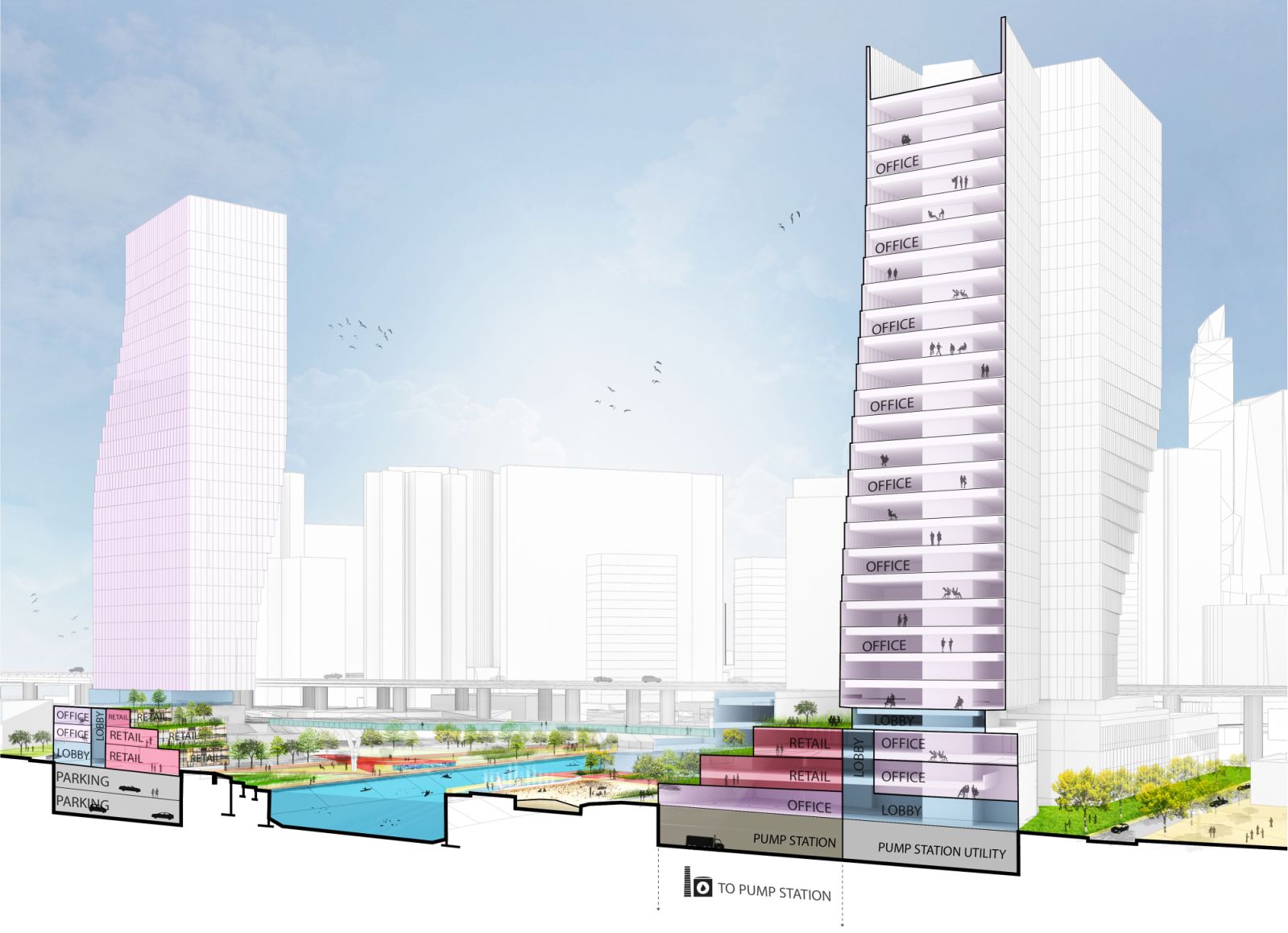
Parks are spaced no more than 500 meters apart, celebrating the city’s long-held desire for more community-oriented open space, and allowing for the creek to dynamically engage with the surrounding neighborhoods. Within these neighborhoods, Shanghai’s unique vernacular architecture and intricate pedestrian networks are preserved with minimal, strategic interventions that transform them into new mixed-use destinations while retaining their existing character.
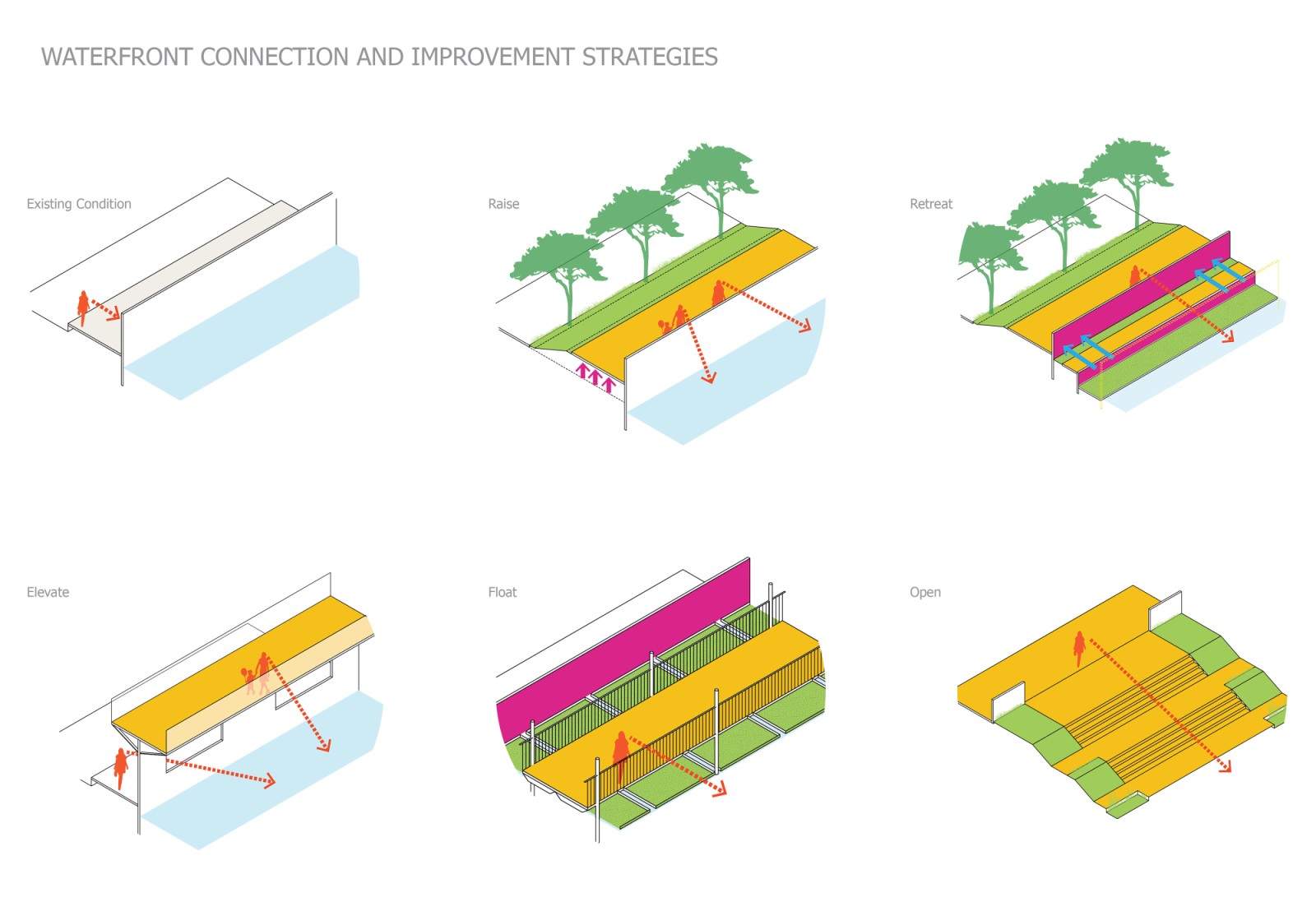
Historic warehouses along the creek are repurposed as cultural destinations to further strengthen the area’s burgeoning arts. Sasaki also reevaluated the ecological potential of Suzhou Creek, considering its unrealized capacity to serve as landscape infrastructure. Wherever space allows, wetland terraces are introduced to restore native habitat, mitigate the impacts of occasional flooding, and provide opportunities for people to get close to the water.

When the need for a floodwall is unavoidable due to tighter conditions, the once utilitarian infrastructure is transformed into an urban art gallery that reimagines the vertical structure as a canvas to celebrate local talent. “The ideas we developed for Suzhou Creek speak to the incredible power of Sasaki’s collaborative, global practice.

Our urban designers, architects, landscape architects, and ecologists worked together across offices on two continents to create a world-class approach that unifies miles of complexity along the creek,” said Sasaki Principal Michael Grove. Tao Zhang, the project’s lead landscape architect, added “We looked beyond what was given and investigated more than expected, because we knew that great discoveries were not contained by the project boundary. The result is a bold yet plausible vision that integrates diverse social and ecological functionality with a balanced spatial composition.” Source by Sasaki.

- Location: Shanghai, China
- Architects: Sasaki
- Client: Shanghai Jing’an Urban Planning Bureau
- Year: 2016
- Images: Courtesy of Sasaki Associates
